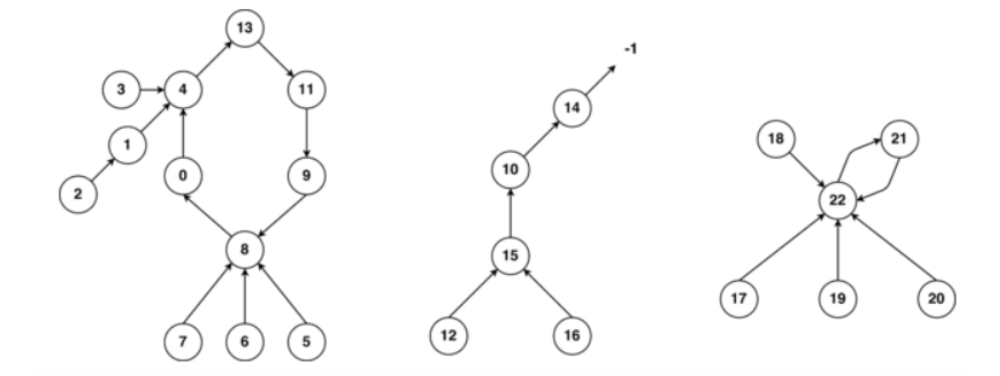Juspay OA-5 2023
Problem Description
You are given a maze with N cells. Each cell may have multiple entry points but not more than one exit (i.e., entry/exit points are unidirectional doors like valves). You need to find the sum of the largest sum cycle in the maze.
- Each cell is labeled with an integer from 0 to N-1.
- You are provided with an array
Edge[]whereEdge[i]represents the cell number that can be reached from cell i in one step. IfEdge[i]is-1, that means the i-th cell doesn't have an exit. - A cycle is a path where a node can eventually lead back to itself. The sum of a cycle is the sum of the node numbers involved in that cycle.
Note: If a node has no incoming edges, its weight is considered to be 0.
Input Format:
- The first line contains an integer N, the number of cells.
- The second line contains N integers representing the
Edge[]array whereEdge[i]contains the cell number that can be reached from cell i in one step. IfEdge[i]is-1, it means cell i doesn't have an exit.
Output Format:
- Output the sum of the largest cycle in the maze. If no cycle is present, print
-1.
Constraints:
- 1 <= N <= 10^5
Sample Input:
23
4 4 1 4 13 8 8 8 0 8 14 9 15 11 -1 10 15 22 22 22 22 22 21
Sample Output:
6
Explanation:
In this example, the graph is created from the Edge[] array. You need to find cycles in the graph and calculate the sum of the node numbers in the largest cycle.
